Star Trek: First Contact Is A Great Movie That Doesn’t Make Sense
Star Trek: First Contact is one of the best films in the franchise, but there are a lot of things about the plot that don't make sense, including the Borg and their plans.

Film appreciation is subjective, but by just about any (albeit imperfect) judgment involving hard numbers, 1996’s Star Trek: First Contact is one of the best films in the series. On Rotten Tomatoes its critics’ score ranks it second best of all thirteen franchise films and number one of all the TNG era films, its audience score puts it in the number four spot overall and still king of the TNG mountain, and its worldwide gross of $146 million made it the top performing Trek movie until 2009’s Star Trek. But there are a lot of things that just don’t make any sense about the story of First Contact, including the actions of the Borg, the presence of Worf (Michael Dorn), and a drastic change in Data (Brent Spiner).
Let me be clear: I love Star Trek: First Contact. Put a phaser to my head and tell me to hit play on one of the TNG era films, and First Contact is the no-brainer. But nothing is perfect, in Trek or any other franchise, and specific points of the story have bothered me for years.
The Borg Only Send One Cube
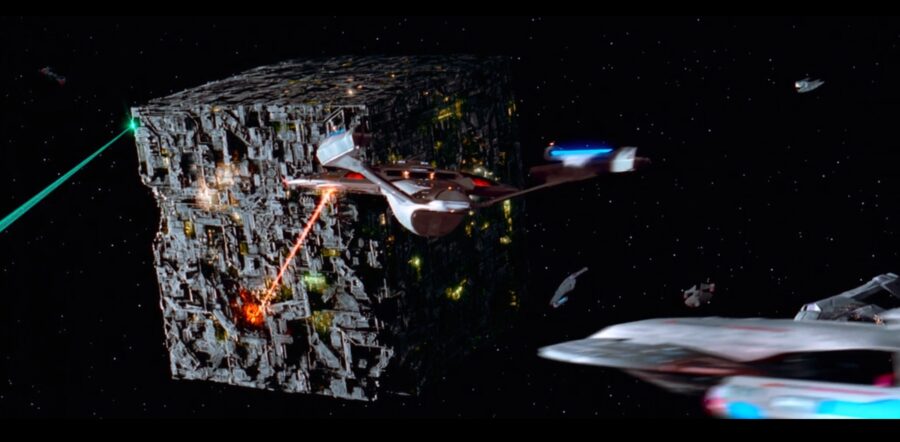
Before Star Trek: First Contact, the most consequential story involving the Borg was TNG‘s game-changing two-parter “The Best of Both Worlds.” With only one of their iconic cube ships, the Borg assimilates Jean-Luc Picard (Patrick Stewart) and transforms him into Locutus of Borg, steams through the Federation, destroys 39 starships and kills 11,000 Starfleet personnel at the Battle of Wolf 359, and is practically unopposed at the doorstep of Earth before the heroes finally defeat them.
One of the defining characteristics of the Borg is that they are able to quickly adapt to overcome any challenge or threat. Take out a few Borg drones with the most powerful phaser rifle you can find, and soon every Borg in the Collective will become completely immune to phaser fire. Yet in spite of the Borg being portrayed as the unstoppable machines of adaptation and evolution, and in spite of them nearly conquering Earth in “The Best of Both Worlds,” in Star Trek: First Contact… they don’t think to maybe send… two ships?
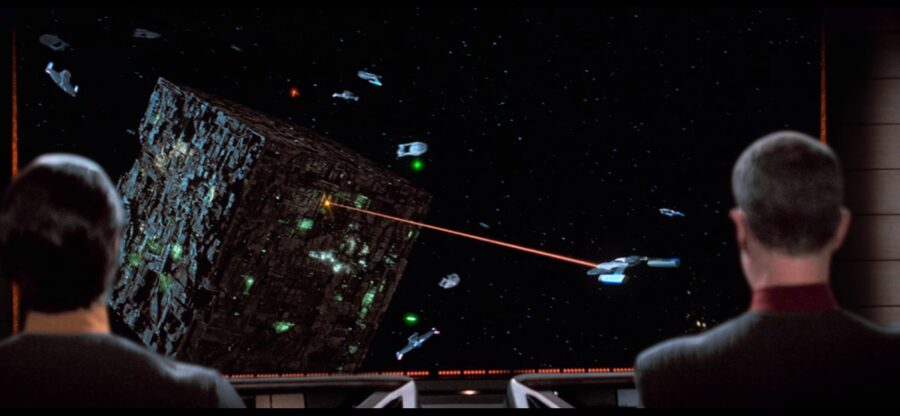
Yes, the Borg ultimately prove to have another plan ready to hatch, and it’s never made clear if the assault on Earth was just a distraction to help the Sphere’s trip to the past, or if the launching of the Sphere was Plan B once the Cube was destroyed. Regardless it’s clear that even with the help of Picard’s vague inside info on the Cube, the fleet defending Earth in the beginning of Star Trek: First Contact just barely succeeds in destroying it. A rather complex and questionable time travel plan could have been avoided by the Borg if their “Assimilate Interstellar Empires” budget had sprung for at least two ships.
The Borg Plan Makes No Sense
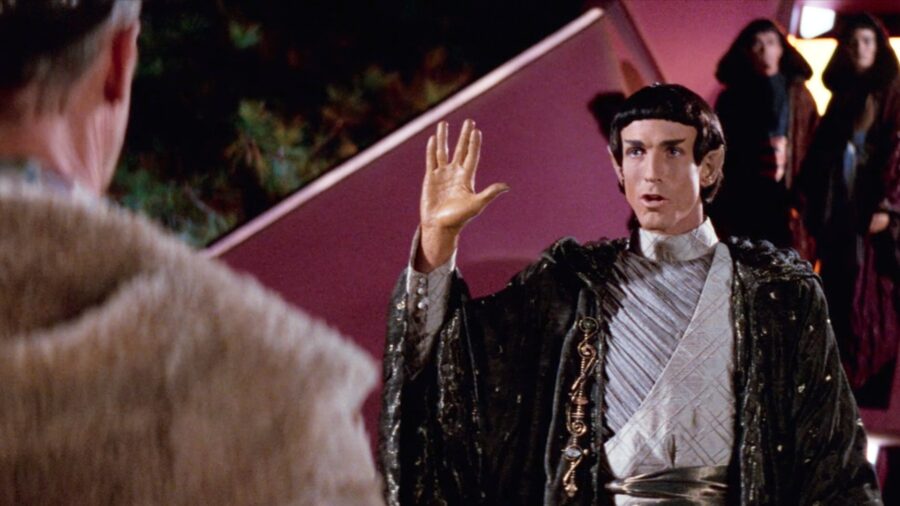
Whether it was Plan A or Plan B, we soon learn the Borg are going back to the latter half of the 21st century to stop First Contact Day — humanity’s first official contact with the Vulcans, which ultimately leads to the founding of the Federation. The Borg believe that by stopping that First Contact, the people of what would have been the Federation will be that much easier to assimilate.
This is the weakest part of Star Trek: First Contact‘s plot. If the Borg had succeeded then yes, they would have stopped the Federation from existing, but that means there would be no Federation to assimilate. They would be robbing themselves of their own prize.
Sure, it would make humans, Vulcans, Andorians, Tellarites, and all of the other member races of the Federation easier prey for the Borg individually, but remember what the Borg always say right before they assimilate their victims: “We will add your biological and technological distinctiveness to our own.” Without the united races of the Federation, that “technological distinctiveness” would be lost.
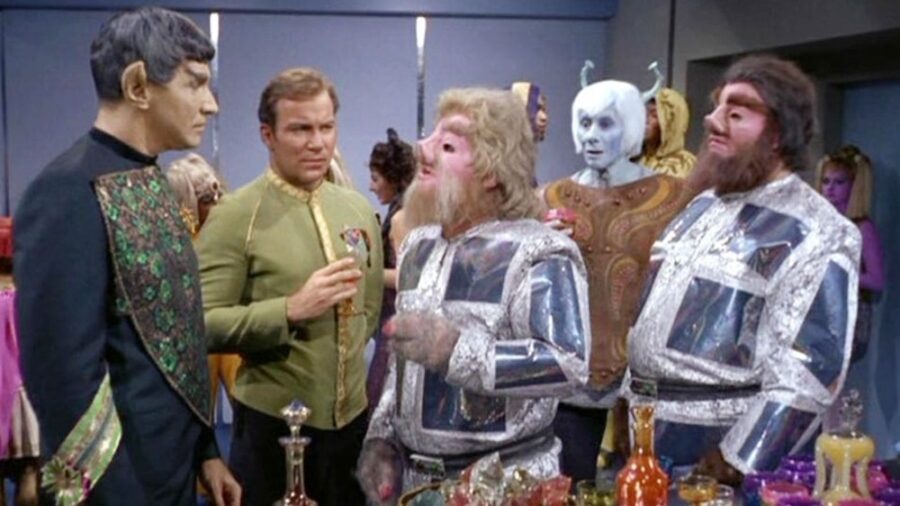
Let’s not forget that the Borg’s Star Trek: First Contact plan could potentially make the rest of the Alpha Quadrant more difficult to assimilate. The Borg aren’t going to be sated by absorbing just one interstellar union into their Collective; they want everyone. By wiping out the Federation, they would make other Alpha Quadrant powers like the Romulans, Klingons, and Cardassians much more powerful.
No matter how you slice it, the Borg Queen’s (Alice Krige) time travel plan is absolutely bananas, particularly when compared to the relatively simple and low-overhead idea of sending more than one ship. Not even three ships. Just two.
Worf Shouldn’t Be In Star Trek: First Contact
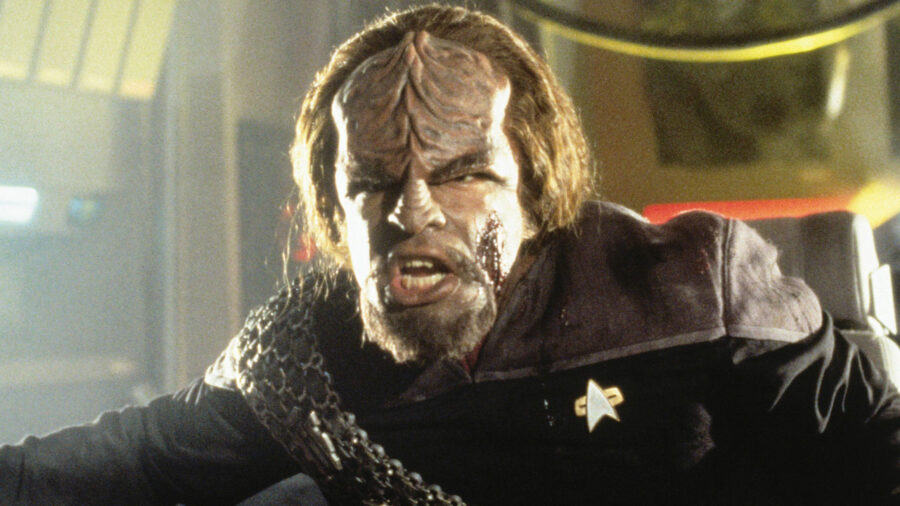
Don’t get me wrong: A TNG movie without Worf would be completely unacceptable, it’s just that the explanation for his presence in the film is, at best, thin.
By the time Star Trek: First Contact was released, Worf had already been a series regular on Star Trek: Deep Space Nine for a year and so was no longer serving on the Enterprise. He gets to show up, however, because DS9’s own ship — the U.S.S. Defiant — is part of Earth’s defense against the Borg. The Borg cripples the Defiant, and Worf is seconds away from ordering the ship to ram into the Borg Cube, before the Enterprise swoops in and saves the Defiant survivors.
The Defiant has no easily explainable reason to be part of Earth’s defense. On Deep Space Nine, it’s said the trip between Earth and the station takes weeks. Even if Starfleet ordered literally every ship they had to Earth, it would be all over before the Defiant arrived.
Admittedly, this would be one of the more easily explainable issues in Star Trek: First Contact. We could learn that the Defiant was already on Earth or nearby because of some off-screen mission, for example, but we never get any such answer in the film.
Data’s New Off Switch Was Disappointing
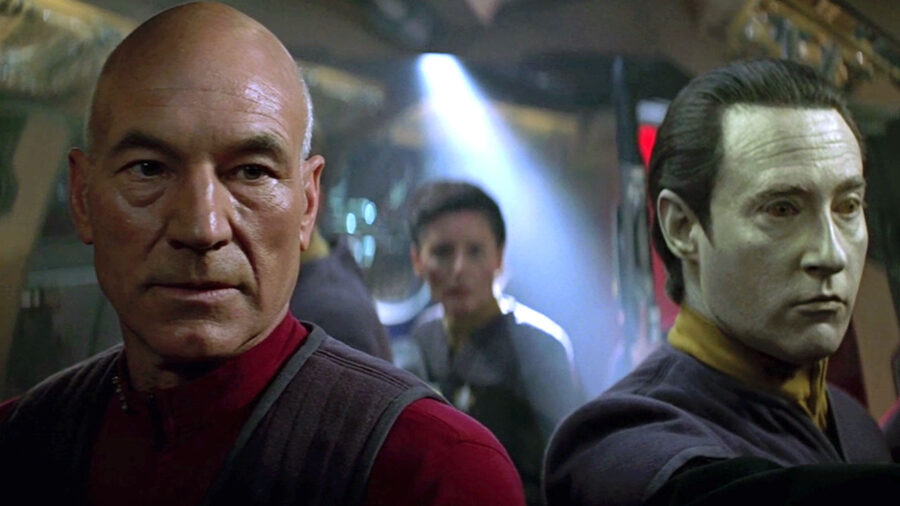
One of the only good things about Star Trek: First Contact‘s predecessor — 1994’s Star Trek: Generations — was the introduction of Data’s emotion chip. It created a new paradigm for the stale Data formula: a man with a superhumanly powerful body, the mind of a supercomputer, and the emotional stability of a toddler. After the Borg are discovered aboard the Enterprise-E, we learn that at some point between the films, Data has somehow developed the ability to simply turn off his emotions with the twitch of his neck.
I admit — this is less something “that doesn’t make sense” than a creative decision I just strongly dislike. I had grown very tired of Data telling the same story over and over: I want to be human, I try to be human, I fail to be human. Introducing this new challenge in which Data would need to learn to master extreme emotions he’d never experienced before was full of promise.
Not only did the writers rob us of that story with Star Trek: First Contact, but they undid what growth Data made with the emotion chip. After all, we can’t just turn off emotions with a crick of the neck. Giving Data emotions, but ones that are purely optional, renders him less human than he already was; not more.












